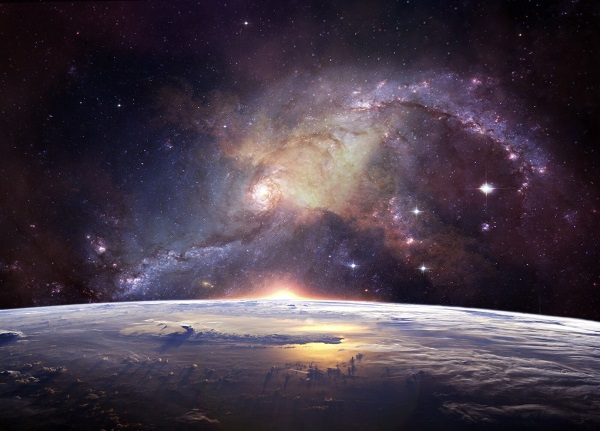A person needs a telescope so big that it would collapse under its own weight to study a star that is hundreds of light-years away.
Because of this, astronomers needed better technology to study objects in space. Space photography was a technology that was used in conjunction with a telescope to study deep space.
Space photography has been around in rudimentary forms since the latter half of the 19th century. But the ability to take high-resolution photographs of stars and planets improved as technology advanced.
Let us explore in detail how did space photography helped astronomers.
What is Space Photography?
Space photography is a photographic technique used to capture images and videos from outer space. These photographs allow us to better understand our universe, as they provide unique views of various celestial objects, from planets and moons, to stars, galaxies, and more.
On Earth, the atmosphere and moisture can obscure distant objects from view, but from space a high-resolution camera can take pictures of these objects with incredible detail. That’s why space photos can help astronomers gain valuable insight into the mysteries of the universe, or even document the birth of a star.
Space photography can also be taken from the moon or other planets to provide unique insight into what life is like on different worlds. By utilizing picture-perfect imagery of space from crewed and robotic spacecraft, space photographers can show us the universe up close and personal as no human can.
How Digital Photography Changed the Course of Astronomy
Digital photography has revolutionized the way we view the cosmos. Astronomy has been transformed ever since digital photography was introduced and has changed the way that astronomers take and analyze photographs of celestial objects.
With digital photography, astronomers are now able to take pictures with greater accuracy and detail, allowing for much more accurate readings and measurements. This means that astronomers are able to observe stars, planets, and galaxies with greater clarity, allowing them to identify features and so much more that was once hidden from view.
Additionally, digital photography saves astronomers precious time on calculations that were necessary for film photography, providing more time for research and analysis. Digital photography has opened an entirely new door in our understanding of our universe and has changed the way we view and study the night sky.
How Telescopes and Space Telescopes are Used for Space Photography
Telescopes act as the “eye in the heavens” and are essential tools for space photography. Ground-based telescopes have limited field of view due to atmospheric disturbances, while space telescopes get a much clearer view of the night sky that can provide sharper images of distant galaxies.
The Hubble telescope is one of the most impressive space telescopes in use, providing beautiful images of galaxies millions of light years away. Telescopes provide detailed images of the planets, comets, and asteroids in our own solar system, as well as of distant galaxies and nebulae.
Astronomers use these images to explore the formation and evolution of galaxies, stars, and other cosmic structures. Through space photography, astronomers are able to uncover information about distant star systems that would not be visible to the naked eye.
Telescopes and space telescopes are true eyes in the heavens, allowing us to explore the wonders of the cosmos. Visit White Star Outdoors to know more about astrophotography.

How Space Photography is Expanding Our Knowledge of our Universe
Space photography is revolutionizing our understanding of our universe, and it is enabling us to answer some of the most long-standing questions about the cosmos. Thanks to vastly improved imaging technology, we are now able to record images of far away galaxies, stars, and supernovae and learn more about them than ever before.
Enhanced resolution allows us to take a closer look at distant phenomena, and the technology is getting better all the time. We are able to observe cosmic events in greater detail, better revealing the answers to some of our questions.
Space photography also allows us to observe phenomena that weren’t visible before, and to more deeply analyze and replicate cosmic behaviors. As a result, we are able to assemble a more accurate understanding of the universe we inhabit. With space photography, we unlock the mysteries of space.
The Beauty Captured by Space Photography
Space photography has allowed us to capture stunning celestial scenes from above. From the imposing grandeur of galaxies to the intricate detail of stars, it can show us an expansive view of our universe. Through the lenses of spacecraft, we can see images of colorful nebulas, clusters of stars, satellites, and other features of our solar system.
Images of distant planets allow us to appreciate their beauty, the rings of Saturn and the craters of Mars providing breathtaking views. With advancements in telescope technology, we are able to get an even better look inside our cosmic home.
From the International Space Station we can see views of Earth’s night sky unaffected by light pollution – distant constellations glimmering in all their glory. Every time we take a glimpse through space photography, we know that the beauty of our universe extends forever, and it never fails to inspire.
How Space Photography is Revolutionizing Astronomy for the Future
Space photography is revolutionizing astronomy for the future by providing astronomers with invaluable data about the universe. This data allows astronomers to gain a better understanding of our universe, which has included identifying new galaxies and binary stars, mapping dark matter and understanding the features of our solar system.
Space photography gives us a firsthand look at distant galaxies and stars, quantifying the vastness of the universe and the beauty and power of the formations within it. Through space photography, we can observe, measure, and analyze things on the smallest scales, such as the crater of an asteroid, or take photos of immense distances like the Pillars of Creation.
This invaluable data helps astronomers to make exciting discoveries, expanding our knowledge and giving us a glimpse into the wonderful complexities of the universe.
Learn How Did Space Photography Help Astronomers
On how did space photography help astronomers is by making it easier to observe outer space with more detail and accuracy. Astronomers are now able to study galaxies and other celestial objects more deeply, leading to greater understanding and discoveries.
As technology advances, so too will the potential for even more magnificence in space photography. To experience this majestic realm firsthand, join a local observatory and look out towards the stars.




